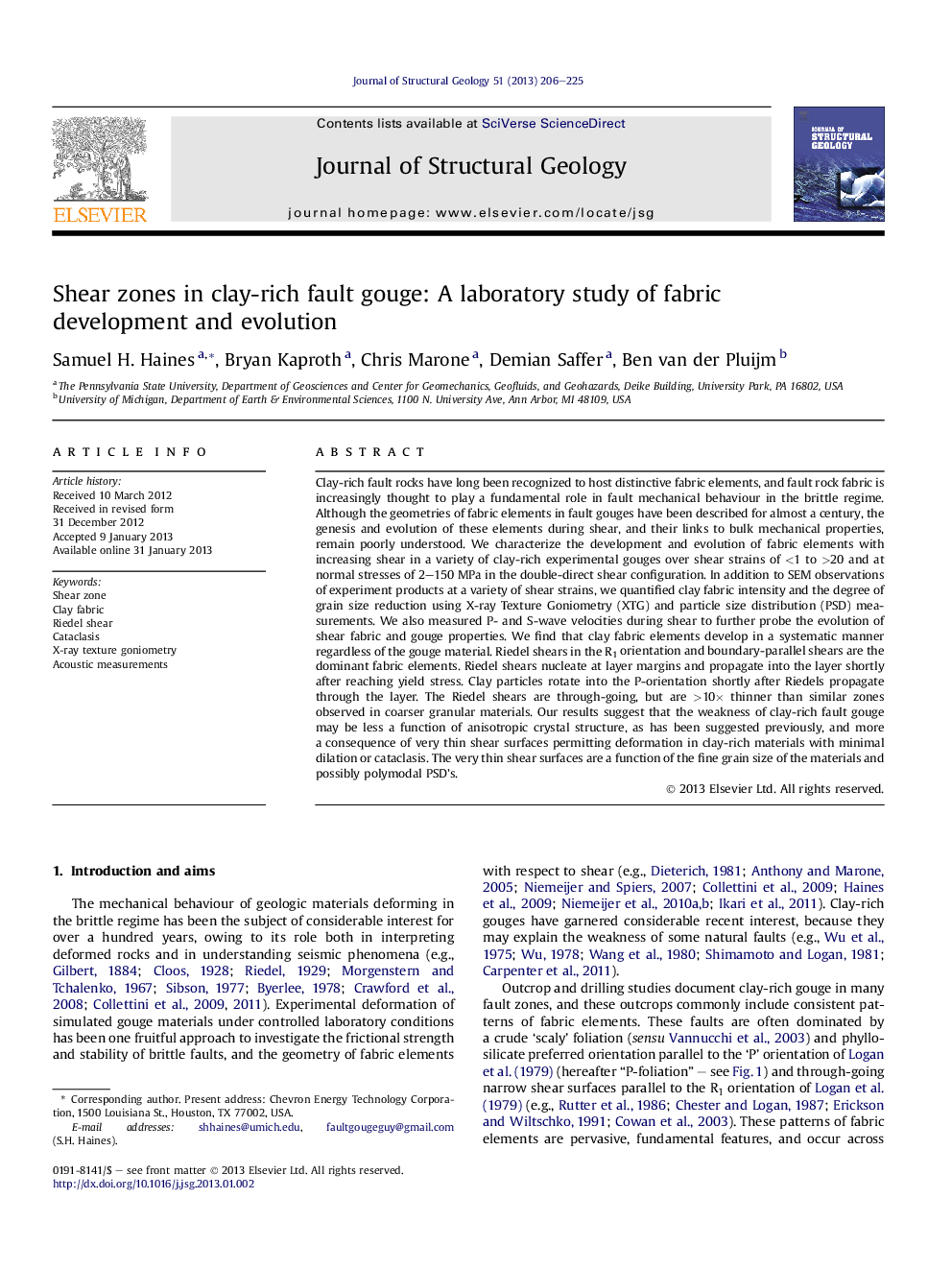| کد مقاله | کد نشریه | سال انتشار | مقاله انگلیسی | نسخه تمام متن |
|---|---|---|---|---|
| 4733199 | 1640526 | 2013 | 20 صفحه PDF | دانلود رایگان |
Clay-rich fault rocks have long been recognized to host distinctive fabric elements, and fault rock fabric is increasingly thought to play a fundamental role in fault mechanical behaviour in the brittle regime. Although the geometries of fabric elements in fault gouges have been described for almost a century, the genesis and evolution of these elements during shear, and their links to bulk mechanical properties, remain poorly understood. We characterize the development and evolution of fabric elements with increasing shear in a variety of clay-rich experimental gouges over shear strains of <1 to >20 and at normal stresses of 2–150 MPa in the double-direct shear configuration. In addition to SEM observations of experiment products at a variety of shear strains, we quantified clay fabric intensity and the degree of grain size reduction using X-ray Texture Goniometry (XTG) and particle size distribution (PSD) measurements. We also measured P- and S-wave velocities during shear to further probe the evolution of shear fabric and gouge properties. We find that clay fabric elements develop in a systematic manner regardless of the gouge material. Riedel shears in the R1 orientation and boundary-parallel shears are the dominant fabric elements. Riedel shears nucleate at layer margins and propagate into the layer shortly after reaching yield stress. Clay particles rotate into the P-orientation shortly after Riedels propagate through the layer. The Riedel shears are through-going, but are >10× thinner than similar zones observed in coarser granular materials. Our results suggest that the weakness of clay-rich fault gouge may be less a function of anisotropic crystal structure, as has been suggested previously, and more a consequence of very thin shear surfaces permitting deformation in clay-rich materials with minimal dilation or cataclasis. The very thin shear surfaces are a function of the fine grain size of the materials and possibly polymodal PSD's.
► Fabric elements in clay-rich rocks develop uniformly, regardless of material.
► Fabrics in clay-rich gouges are subtly different than in more granular materials.
► Particle morphology strongly affects frictional strength.
► Riedel surfaces are far thinner than in more granular materials with less cataclasis.
► Clay-rich gouges are weak because cataclasis is kept to a minimum.
Journal: Journal of Structural Geology - Volume 51, June 2013, Pages 206–225
